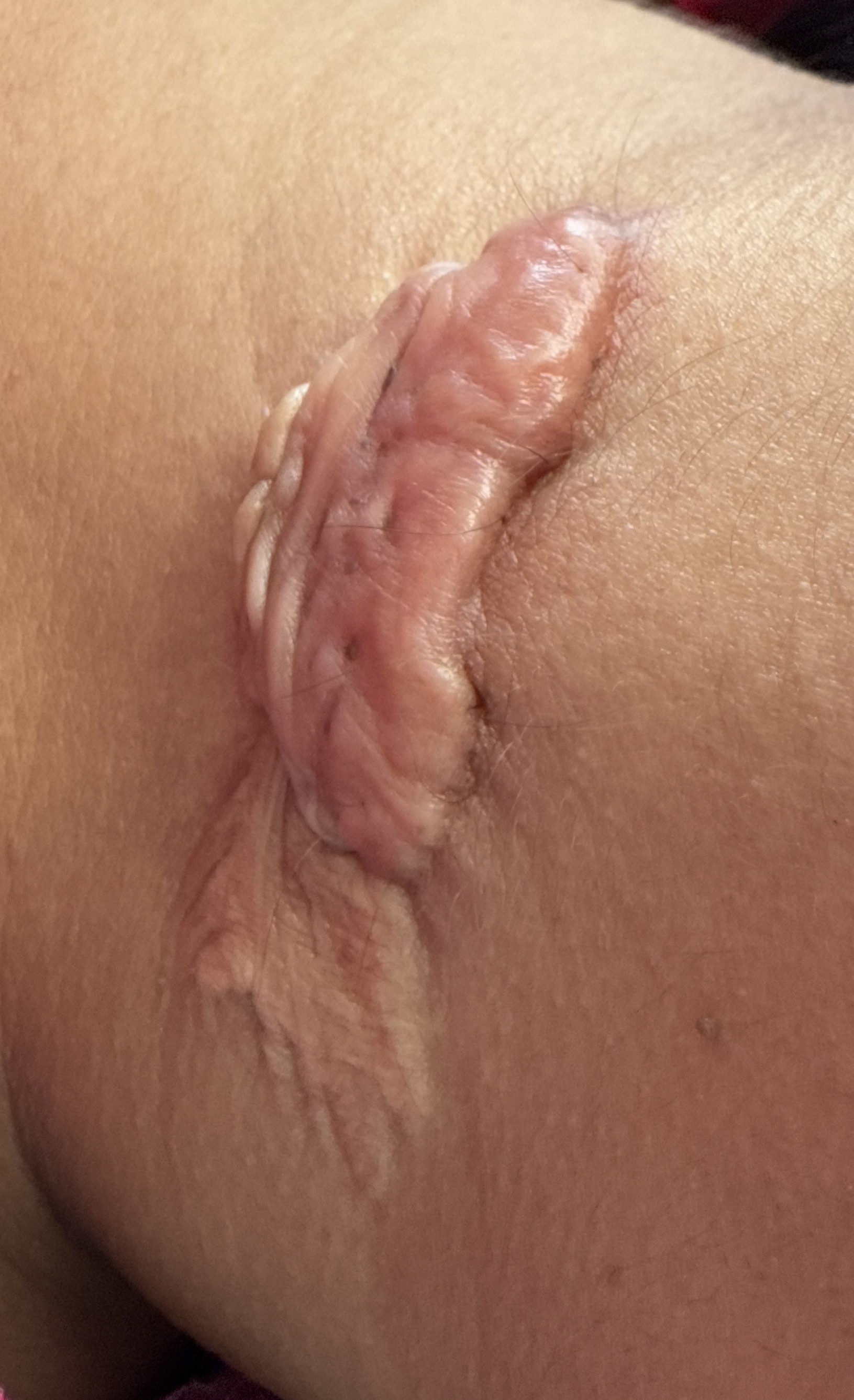Keloid scars are raised, thickened areas of skin that form when the body produces excess collagen during the healing process. Unlike normal scars, keloids extend beyond the original injury site and continue to grow over time. They are more common in individuals with darker skin tones and can occur after any skin trauma, such as cuts, burns, or even acne. Keloids are not harmful but can be itchy, painful, or cause discomfort, and their appearance can affect self-esteem.
Keloid scars occur due to an overactive wound healing response, where the body produces too much collagen, leading to the formation of a raised, fibrous scar that extends beyond the original injury. This abnormal healing process involves the proliferation of fibroblasts and excess deposition of extracellular matrix components, including collagen. Genetic predisposition plays a role in keloid formation, making it more common in individuals with a family history of keloids or certain ethnic groups, particularly those with darker skin. The exact molecular mechanisms behind keloid formation are still being studied.

(Available on Excel V and Excel V Plus)
Best for
Mild cases or isolated vessels.
How It Works
The long-pulse Nd:YAG laser emits energy at a wavelength absorbed by haemoglobin in blood vessels. This heat causes the targeted vessels to collapse, effectively treating both surface red veins and deeper blue veins.
Results
Treated vessels may disappear immediately or gradually fade over several weeks.
(Candela VBeam Perfecta, Excel V, Excel V Plus, Sciton BBL)
Best for
More severe cases or large areas of visible facial veins and redness, particularly in rosacea.
How It Works
This approach layers multiple vascular-targeting technologies in one session, including:
Results
Effectively reduces visible veins, diffuse redness, and facial flushing commonly seen in rosacea.
(Candela VBeam Perfecta, Excel V, Excel V Plus, Sciton BBL)
Best for
Stimulating collagen and vascular remodelling to reduce persistent skin redness.
How It Works
Often recommended in combination with vascular laser or BBL treatments to enhance skin healing, texture, and redness reduction.

Keloid scars form when the body produces too much collagen during the healing process, resulting in a raised, fibrous scar that extends beyond the original injury site. They are often triggered by skin trauma such as cuts, burns, or acne.

Keloid scars can be challenging to remove completely. However, treatments such as laser therapy, steroid and/or anti-mitotic injections, and surgical excision can significantly reduce their size, appearance, and associated discomfort. While the goal is to minimize the scar, noticeable improvement is often achievable, though recurrence remains possible.

The number of laser sessions required varies depending on the size and severity of the keloid. Typically, multiple sessions spaced over several weeks or months are needed to see significant improvement. Most patients see gradual reduction in keloid size and redness over the course of treatment.